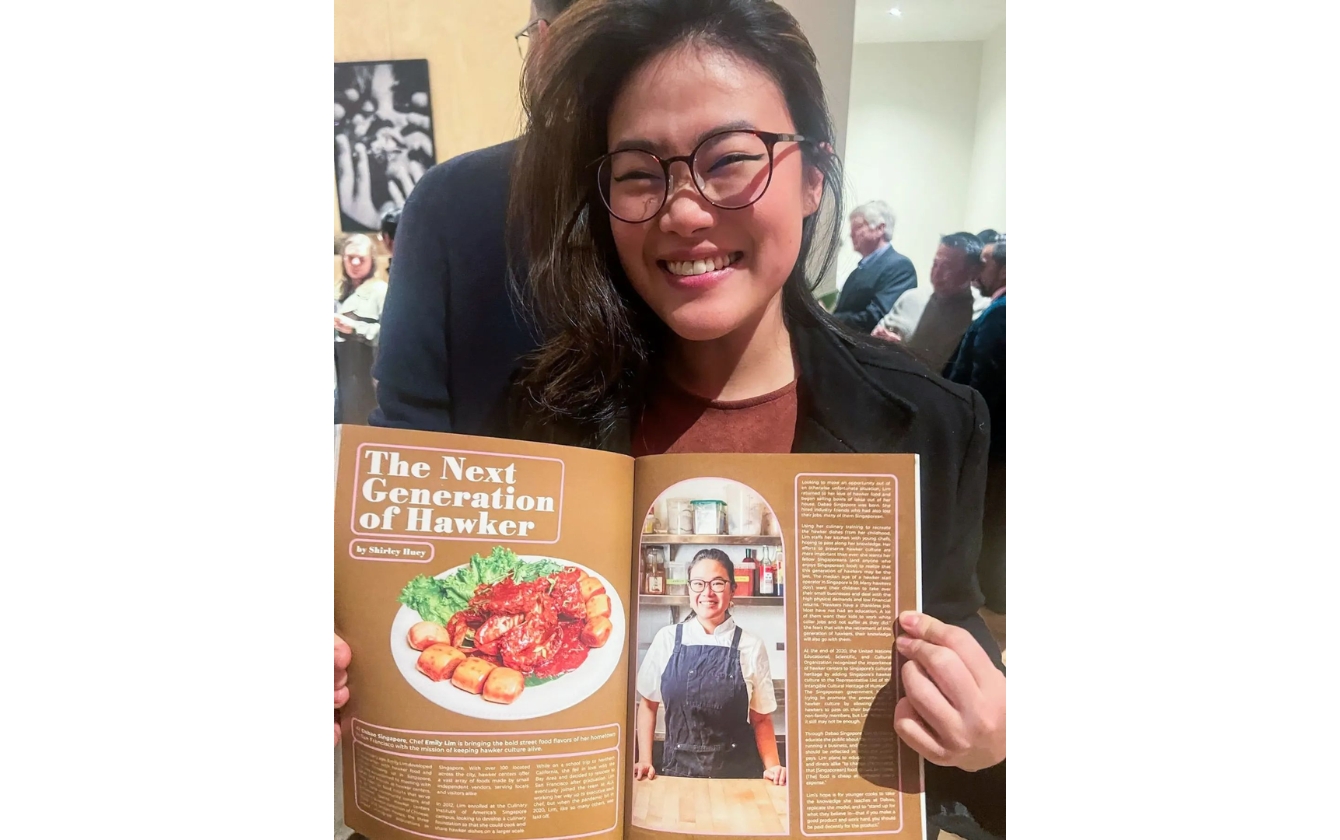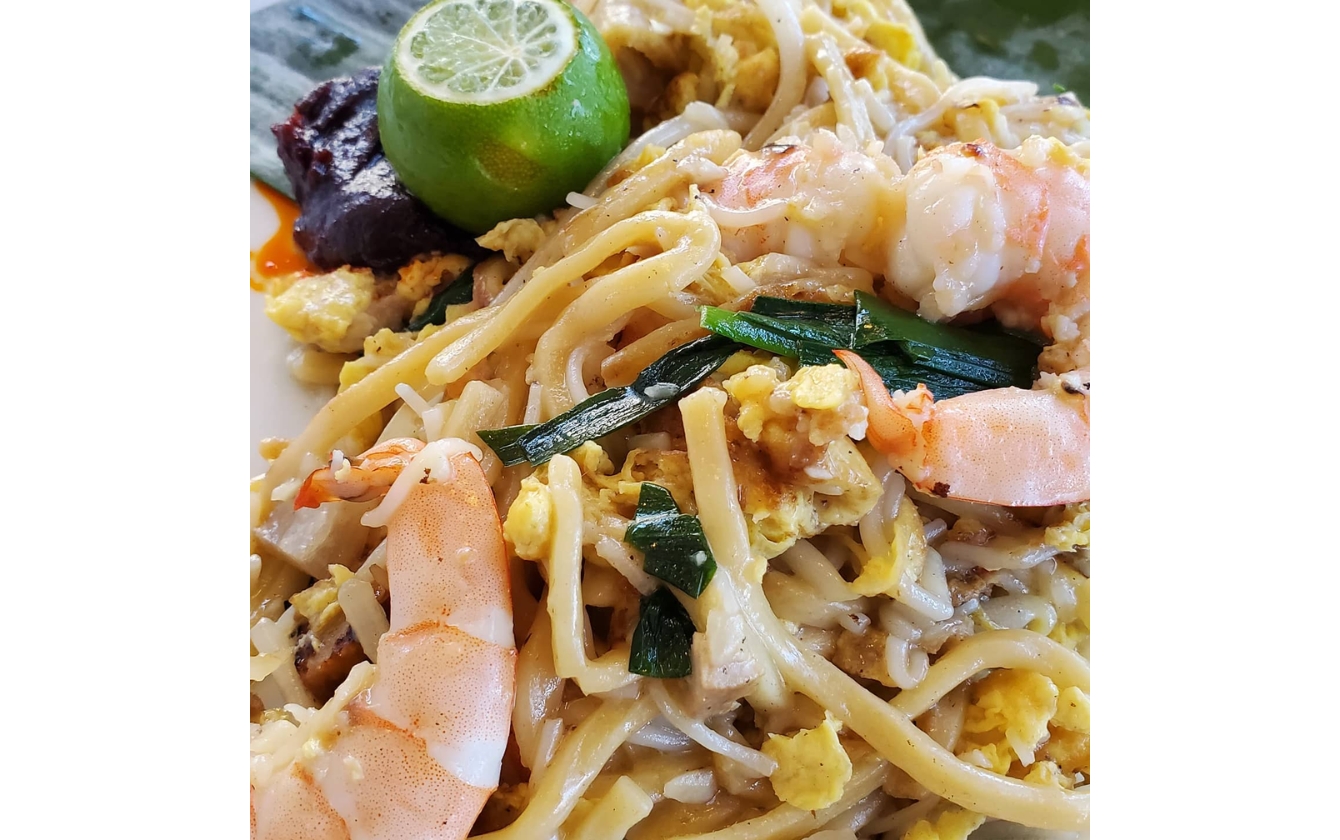
Gen Grit: Emily Lim of Dabao Singapore on spreading Singapore’s hawker culture in San Francisco

Emily Lim, 33, is not your conventional chef. The Singapore-born, San Francisco-based culinary force has built a name for herself through sheer grit, a rebellious spirit, and an unwavering love for her homeland’s cuisine. As the founder of Dabao Singapore, she has been at the forefront of bringing bold and authentic Singaporean flavours to the American dining scene, earning her a nomination for the prestigious James Beard Award.
Her culinary journey, however, has been anything but linear. Before helming her own venture, Emily trained in Michelin-starred restaurants, battled the grueling reality of fine dining, and even contemplated leaving the industry. But the pandemic became a turning point; she pivoted, launching Dabao Singapore from her home kitchen, feeding a growing community hungry for authentic Southeast Asian food.
Her presence on Food Network (with over 11 appearances on shows like Guy’s Grocery Games, Chopped, and Beat Bobby Flay) has further cemented her reputation. But she’s also no stranger to criticism. In one memorable moment, a sleep-deprived misstep led to what Reddit dubbed “the grossest thing on TV.” Rather than shy away, Emily embraced the chaos, laughing it off as just another chapter in her ever-evolving culinary adventure.
Ler Jun: How would you introduce yourself to someone you're speaking to for the first time?
Emily Lim: Honestly, I'll just play as low key as possible, and be just like: “Hi! My name is Emily.” That is it. Unless I am prompted, it ends there because I do way too much.
LJ: I know! You are in the kitchen, you are doing other gigs, and you are also filming.
EL: Obviously, as a small business owner, you do everything, right? But on top of that, I have filmed two cooking competitions in the past four months, which are going to appear on Food Network soon.

LJ: You grew up in Singapore and moved to San Francisco in 2014. What led to this decision?
EL: I struggled to fit into Singapore’s conventional expectations for success. Growing up, I struggled with traditional academics. If I wasn’t interested in a subject, I tuned out, but if I was, I’d excel. In fact, I was diagnosed with ADHD later in life, so maybe that explains why. Anyways, my parents discouraged me from pursuing the arts, so I ended up in Mass Communication, but food was what I truly loved.
There was always a calling for me with food. Because no matter what I do, such as hanging out with friends, food’s involved. We are always hanging out with friends with food, right? That's a Singaporean favourite pastime. As a broke student, dining out wasn’t always an option, so I’d invite friends over and cook instead. That’s when I realised how much I loved feeding people. Moving to San Francisco and studying at the Culinary Institute of America felt like the right step; it gave me a fresh start and the chance to turn my passion into something real.
LJ: What inspired you to be a chef?
EL: That passion really clicked for me during a school trip to Napa Valley. I tasted an heirloom tomato in peak season, and it blew my mind. In Singapore, tomatoes were usually sour and bland, but this one was sweet, juicy, and full of flavour. Imagine this: with just olive oil, balsamic, and sea salt, it tasted perfect. I wanted to be somewhere where food was celebrated at its best.
LJ: Take me through some of the food ventures you have been up to in the decade.
EL: As a young cook, I worked at several Michelin-starred restaurants, including some in Singapore, to build my foundation and understand how they operate. It was intense, but I gained solid experience and strong referral letters from a few Michelin-star chefs. Eventually, I wanted to take on a junior management role, so I applied to another Michelin-starred restaurant and was in the process of onboarding as a Chef de Partie, with potential promotion to Junior Sous Chef.
But I had a moment of clarity; I realised I wouldn’t be true to myself if I continued down that path. I’ve always had a deep connection with Singaporean cuisine, yet we tend to glamorise Western food while undervaluing our own. People don’t hesitate to pay more for a simple chicken cutlet and fries, but if a hawker raises prices for a labour-intensive dish like laksa, there’s backlash. That disconnect, perhaps also rooted in a mix of internalised classism, has always bothered me.
Food has always been my creative outlet, my way of making people happy. So, I chose to focus on what excites me most: celebrating and elevating Singaporean cuisine.

LJ: How did Dabao Singapore come to be?
EL: I was in San Francisco, feeling a little lost. I didn’t want to work in another restaurant unless I had a truly good boss, and honestly, I was tired of the rampant sexism in the food industry. There’s always this assumption that women are weaker. Physically, sure, we may struggle to carry 30-pound stock pots, but that’s hardly what defines a good chef.
By 2019, I started thinking about returning to Singapore and opening a hawker stall near my home, focusing on just one dish and doing it really well. I believed in the idea, but the reality of working in Singapore’s heat made me hesitant. Plus, I wasn’t keen on dealing with constant humidity and oil splatter on my face. So, I started exploring other ways to bring my vision to life.
LJ: The heat is real.
EL: Plus, the money is a lot better in California, and there's a sense of work life balance too. Back to your question, the pandemic was the real catalyst; it made me just YOLO. My mindset was, if we’re all going to die, might as well do something meaningful rather than sit at home in fear. So, I took the leap.
I had already been making meals for people with dietary restrictions, so I started with meal kits. It was a way to keep cooking and connect with people, even when everything felt uncertain. That’s how Dabao Singapore began.

LJ: Didn’t the pandemic throw a wrench in the works?
EL: When the pandemic hit, we were furloughed indefinitely. No one knew what was going on: could we open, stay closed, or when things would resume? So, I decided to wait it out. But after a few weeks, I got restless.
I started talking to some of the interns from my company, and their situation was much worse. Since they were foreigners, they weren’t eligible for government aid, and with borders closed, they couldn’t even go home. They were stuck in San Francisco, one of the most expensive cities in the world, without income, struggling to afford rent.
That’s when another Singaporean chef and I decided to start making and selling Singaporean food. The Southeast Asian chef community was small but supportive. I remember Tracy Goh, a Malaysian chef who was opening up her restaurant (Damansara SF) then, uploaded an Instagram post, telling people to come to me for laksa. And then, boom! Business blew up. Orders poured in, and I found myself cooking hundreds of bowls of laksa out of my tiny home kitchen. It was overwhelming but also the beginning of something big.

LJ: What’s your favourite hawker dish?
EL: Hokkien mee.
LJ: How was the feedback when you introduced Singaporean hawker food to people overseas? Were they receptive?
EL: I never set out to appease the masses; I try to keep my food as authentic as possible. But sometimes, bobian (which means having no choice in the Hokkien dialect), you make small adjustments. Overall, the response has been really positive. Some customers have even become friends. One of them told me he ordered my hokkien mee during the pandemic, and when he ate it, he cried. With travel restrictions in place, there was no way to go home, and he missed his family deeply. The food gave him a sense of comfort. That, to me, is the essence of Singaporean food.
LJ: What were/are some of these adjustments?
EL: Having steamed vegetables, like cabbage, with Hainanese Chicken Rice. I don’t know why but they are big on greens and salads.

LJ: What was the most rewarding moment since Dabao Singapore opened?
EL: (Former Prime Minister/Senior Minister) Lee Hsien Loong said my chicken rice is “Not bad”! I even have a photograph!
LJ: We know you are busy with cooking on TV now. Could you share a little more about what you have been preoccupied with?
EL: I’ve been on Food Network multiple times, mostly on Guy’s Grocery Games; I’ve done three or four episodes and even won one. I also competed on Beachside Brawl, which was wild since they filmed right on the beach, including one in Los Angeles. More recently, I was on Chopped: Name Your Price (episode 2) and won that one. I guess I’m a Chopped champion now.
LJ: What do you think of these exposures?
EL: It’s pretty cool getting to showcase Singaporean food on TV. I try to incorporate as much of our cuisine as possible and show how much effort goes into making it.
LJ: What is one thing you are trying to educate people on?
EL: There’s a common misconception here that if laksa is $20, it’s overpriced because it costs $4 in Singapore. But they don’t think about the bigger picture; flights to Singapore aren’t $4, rent isn’t cheap, and minimum wage here is $19 an hour. It can be frustrating, but I love using these opportunities to spread the Singaporean food gospel on TV.
LJ: What’s a dish in your space you’d recommend to people now?
EL: Hokkien mee. For those who don’t know what it is, I’d say it’s a ‘surf and turf’ noodle dish with pork, shrimp, and squid. (laughs). They don’t have anything like that. The wet ones are the way to go! We even fry our lard and belachan (chilli paste with spices and shrimp) from scratch.
LJ: Do you make it healthier for them?
EL: No. But if they die, die want, then it’s a side of steamed vegetables.
The interview has been edited and condensed for clarity.
Gen Grit documents the grit younger generation of Singaporeans possess. Passionate, driven and have a heart to call, many of these youths are taking it on their own to empower communities, all while embodying the co-operative values of self-help and mutual help. Here, we profile Emily Lim, the Singaporean founder of Dabao Singapore.
Photos courtesy of Dabao Singapore.
By Sng Ler Jun


